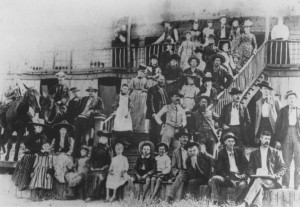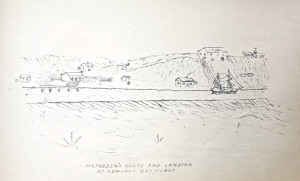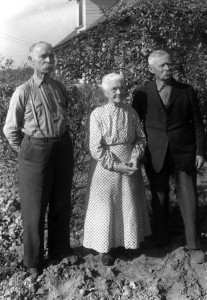
Patriotic Hall mural
Helen Lundeberg’s three murals in the Bob Hope Patriotic Hall were completed in 1942 and have not been seen since the 1970s.
Photo Credit: LA County Arts Commission
The Public Works of Art Project (PWAP), Federal Art Project (FAP), Treasury Relief Art Project (TRAP), and the Treasury Section of Fine Arts— Depression-era programs that put artists to work nationwide— sparked a Renaissance in American art. These New Deal agencies commissioned thousands of murals, sculptures, paintings, carvings, mosaics, and more. Many of these works adorned the public domain.
The city of Los Angeles was richly endowed with New Deal artworks. Several, such as the statue of Florence Nightingale by David Edstrom in Lincoln Park, and Helen Lundeberg’s monumental, 240-foot-long mural, “History of Transportation” in Inglewood, have recently been restored to their former glory thanks to private and public benefactors.
There are, however, a startling number of Los Angeles’s New Deal artworks that have gone missing. The exact number is unknown, but could range from several dozen to well over a hundred.

Modern Youth
Jason Herron’s 1937 sculpture, Modern Youth, was presumed lost for decades when a Belmont High School employee noticed it in the school’s basement. Today, it stands in the school’s foyer.
Photo Credit: Charles Epting
Recently, a coterie of New Deal enthusiasts formed Rediscovering WPA LA and established a website, rediscoveringwpala.com. The impetus for the effort was the rediscovery of Jason Herron’s 1937 “Modern Youth” sculpture at Belmont High School. Officially listed as stolen by the Smithsonian Institution, the statue had actually been hidden away in the school’s basement for decades until a school employee stumbled upon it a few years ago.
Undoubtedly, other public artworks have met a similar fate—murals rolled up and forgotten; sculptures and paintings that were removed to storage that never reemerged.
Rediscovering WPA LA is trying to determine the fate of Los Angeles’s long-lost federal art. Scouring county records, newspapers, and other sources, they came up with a comprehensive list of the New Deal art commissioned in Los Angeles County. They pared the list to a kind of “Ten Most Wanted”—those artworks having cultural or historic significance and a strong chance of being recovered—and posted them online.
The goal is to find and return these pieces to public prominence. Any tips and financial support in this endeavor would be much appreciated!


